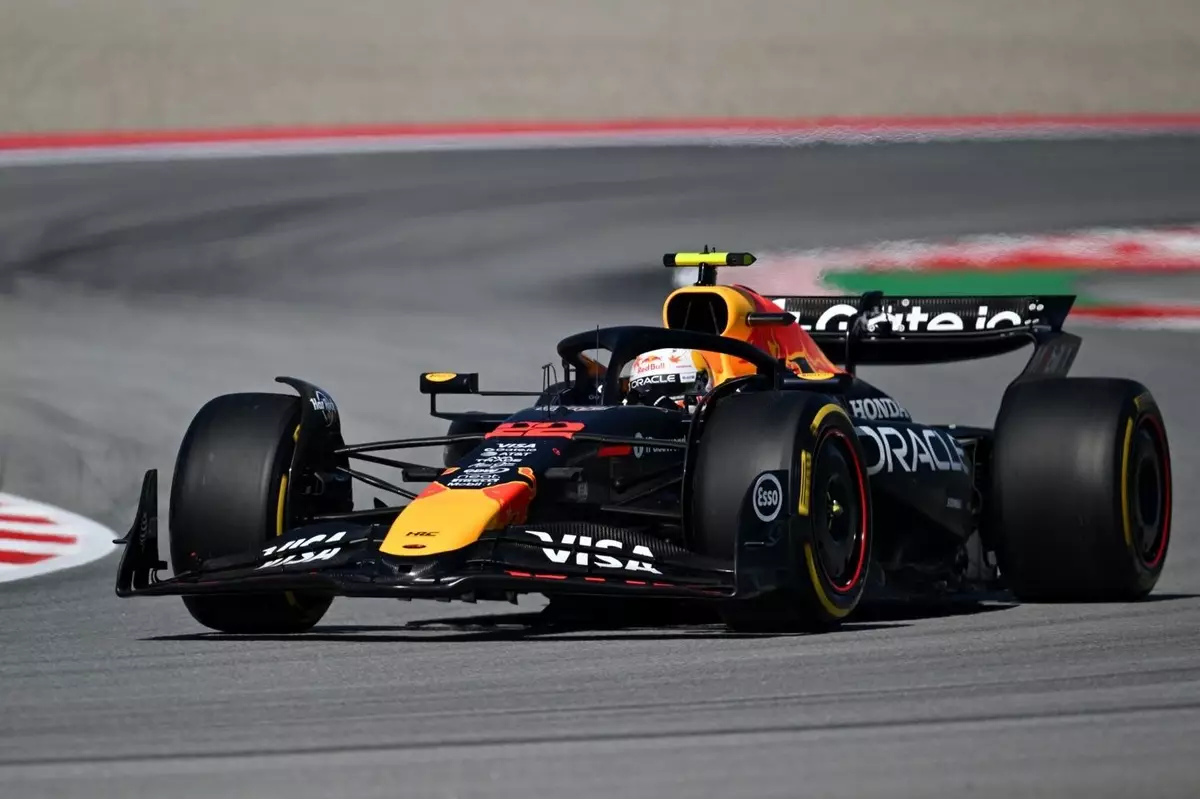As the lights dimmed on the Spanish Grand Prix, the spotlight shone brightly on Yuki Tsunoda, the young driver from the Red Bull team. Despite the hype, Tsunoda found himself grappling with a perplexing lack of pace during the opening practice sessions. His admission of bewilderment, stating that he “doesn’t have any idea why I’m slow,” resonates deeply within the highly competitive environment of Formula 1. Racers are often their own fiercest critics, and Tsunoda’s candidness underscores a fundamental truth: speed is not just about the car, but also a deeply personal, psychological journey.
This bafflement with performance is not just a fleeting concern; it represents a larger issue faced by many drivers in their careers. How can one minute feel fluid and controlled, while the next seems sluggish and lacking? In Formula 1, where marginal gains are the cornerstone of success, the mental aspect of racing can often overshadow the physical elements. Tsunoda’s reflection on his performance invites us to question whether the psychological pressures of racing at such high speeds and scrutiny contribute to his lack of clarity on performance issues.
The Technical Breakdown: Understanding the Gaps
To analyze Tsunoda’s situation further, it is essential to consider the technical aspects he alludes to. He spoke about experiencing sliding at both axles, a concerning sign indicating balance and grip issues the car struggles with, particularly through critical sections like Turn 9 and Turn 10. GPS data revealing a significant deficit in speed through these turns compared to his teammate, Max Verstappen, suggests that while Tsunoda may be exerting effort, the car calibration and setup are misaligned with his driving style or the track’s conditions.
Verstappen’s commentary on his own performance, while optimistic, also hints at the intricacies of driver-car synergy. He indicated a desire for a better feeling from the car—a sensation that can often dictate a driver’s confidence. Thus, it’s conceivable that the same setup issues affecting Tsunoda’s pace might be dampening Verstappen’s performance. The nuances of car setup and driver preferences play a pivotal role in achieving competitive lap times, an aspect where Tsunoda may have fallen short.
A Team Dynamics Perspective
Tsunoda’s introspection also invites broader implications regarding team dynamics. The culture within a racing team often dictates how drivers communicate their concerns and seek improvements. Verstappen’s assessment of his Friday experience as “OK” reflects a different mindset when juxtaposed against Tsunoda’s confounding struggle; it exemplifies the differences that can emerge between teammates. In high-pressure scenarios, how drivers respond to slower-than-expected performance can either unify or fragment the team.
Tsunoda’s acknowledgment that he did not make a fundamental mistake could indicate a confidence that, while shaken, has not completely eroded. His willingness to stay up late, perhaps sacrificing rest in pursuit of improvement, illustrates a commitment to personal and professional growth. However, these pressures also highlight the inherent risk of burnout, making the team’s role in supporting a driver mentally and physically essential.
The Path Ahead: Challenges and Opportunities
As the sky darkens and the racing circus shifts into a flurry of preparation for the remainder of the weekend, the stakes now intensify for Tsunoda. The looming challenge of reconciling his pace with the expectations of a Red Bull driver is daunting. Yet, within this crucible of pressure lays an opportunity for growth and adaptability. Finding tangible solutions to the lack of pace will serve as a critical juncture in his career trajectory.
While critics may identify Tsunoda’s struggles as a sign of inconsistency, they also present a vital learning experience. The depths of competitive racing dictate that every setback can serve as an impetus for progress. The importance of resilience cannot be overstated in sports, especially when top-tier performance is an expectation, not merely a desire.
Embracing this complexity within Formula 1, where drivers are not just athletes but also competitors in a multifaceted arena, provides a richer narrative. Tsunoda’s journey, filled with uncertainty and hope, reflects not only his own aspirations but also the unpredictable essence of racing itself. Each practice session not only serves as a test of speed but a canvas upon which the art of racing is painted—one fraught with challenges yet radiant with potential.


Leave a Reply